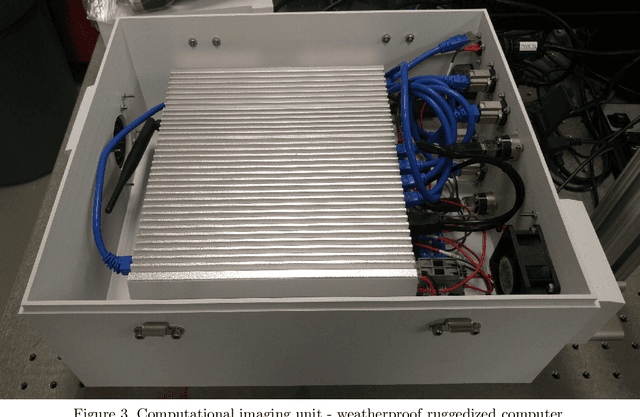Max Ruby
The Mertens Unrolled Network : A High Dynamic Range Fusion Neural Network for Through the Windshield Driver Recognition
Feb 27, 2020



Abstract:Face recognition of vehicle occupants through windshields in unconstrained environments poses a number of unique challenges ranging from glare, poor illumination, driver pose and motion blur. In this paper, we further develop the hardware and software components of a custom vehicle imaging system to better overcome these challenges. After the build out of a physical prototype system that performs High Dynamic Range (HDR) imaging, we collect a small dataset of through-windshield image captures of known drivers. We then re-formulate the classical Mertens-Kautz-Van Reeth HDR fusion algorithm as a pre-initialized neural network, which we name the Mertens Unrolled Network (MU-Net), for the purpose of fine-tuning the HDR output of through-windshield images. Reconstructed faces from this novel HDR method are then evaluated and compared against other traditional and experimental HDR methods in a pre-trained state-of-the-art (SOTA) facial recognition pipeline, verifying the efficacy of our approach.
Deep Back Projection for Sparse-View CT Reconstruction
Jul 06, 2018



Abstract:Filtered back projection (FBP) is a classical method for image reconstruction from sinogram CT data. FBP is computationally efficient but produces lower quality reconstructions than more sophisticated iterative methods, particularly when the number of views is lower than the number required by the Nyquist rate. In this paper, we use a deep convolutional neural network (CNN) to produce high-quality reconstructions directly from sinogram data. A primary novelty of our approach is that we first back project each view separately to form a stack of back projections and then feed this stack as input into the convolutional neural network. These single-view back projections convert the encoding of sinogram data into the appropriate spatial location, which can then be leveraged by the spatial invariance of the CNN to learn the reconstruction effectively. We demonstrate the benefit of our CNN based back projection on simulated sparse-view CT data over classical FBP.
 Add to Chrome
Add to Chrome Add to Firefox
Add to Firefox Add to Edge
Add to Edge